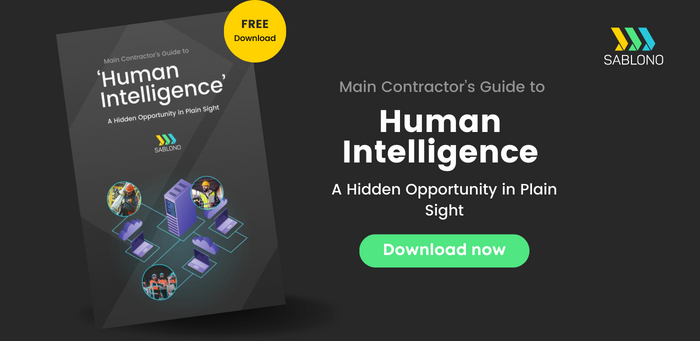The world is changing. Work is becoming increasingly digital, and like every other sector, construction is beginning to see more digital transformations and new technologies come to the fore.
Onsite traditional construction methods are being replaced by digital methods, embracing smart technologies and digitalisation.
This article will discuss construction 4.0 in great detail, highlighting the benefits, potential implications and how you can use digital platforms and technologies to take your projects to the next level.
What is construction 4.0?
Construction 4.0, otherwise known as the fourth industrial revolution or Industry 4.0 refers to using digital advancements to innovate and advance the construction industry.
While construction 4.0 is still developing, digital practices like laser scanning, artificial intelligence, building information modelling (BIM), and cloud computing significantly impact how the built environment is designed, executed and maintained.
|
What are some initiatives we'll see in construction 4.0?
Construction robotics
Regardless of digital advancements, construction is a highly labour-intensive industry. It involves several time-consuming and repetitive tasks that could be done much quicker via automation or robotics.
Construction robots also lead to fewer human errors due to fatigue and other side effects of monotonous work.
Construction robots also have the power to automate fleets for excavation, load lifting, demolition, concrete works, and heavy machinery.
This dramatically reduces the chances of safety issues occurring while also shortening operational times and increasing the productivity of projects.
Construction project management software
In construction 4.0, cloud-based construction project management software will become more popular and will improve quality while reducing time and costs.
Rather than trying to estimate how feasible a job is based simply on human intuition and past experience, you can use AI-based predictive algorithms, real-time and historical data, which offer a much more accurate outcome.
Project managers can use tools like Sablono, to connect their entire construction supply chain in a single platform and understand the progress of their project, track performance, set milestones, communicate with various parties and more without having to rely on paper-based systems or spreadsheets
Because of this, digital construction project management software improves communication, increases efficiency, reduces waste, and helps to streamline processes to help projects get completed faster with fewer issues.
Advanced Building Materials
As the construction industry moves to green approaches, advanced building materials will be a significant part of achieving those environmental goals.
Plenty of sustainable materials are getting chosen ahead of older, less green options. This includes materials created from living organisms, such as self-healing concrete, or 3D-printed materials that require less energy to produce, such as 3D-printed basalt.
Other advanced building materials set to become the norm in construction 4.0 include spider silk, hydrodynamics, carbon composites, graphene, and aerogel. Each of these materials is significantly lighter while also boasting strong water-holding capabilities.
Offsite Construction
One of the most prominent emerging construction industry trends that are impacted by construction 4.0 is offsite construction. It allows for designing, manufacturing, and fabricating aspects of the job to get built in a factory rather than onsite.
In traditional construction, these types of jobs can become costly when they are impacted by weather and other onsite issues that may arise.
On the flip side, offsite construction can help speed up the project completion, improve quality and save costs. On top of this, it is thought to be more sustainable and safer for workers.
Construction 4.0 includes the use of new assembling techniques, such as 3D printing, which has many environmental and profitability benefits.
3D printing allows for the prefabrication of big 3D structures, including homes or rooms. Preplanning offsite can allow for a more efficient process when workers are on site and also a much safer work environment for those workers, as the health and safety checks have been completed digitally beforehand.
Prefabrication and modular construction is the term used for manufacturing construction elements off-site before assembling them onsite.
In principle, these modular and prefabrication elements can be moulded and customised to suit a particular project. This is a much faster construction process than traditional methods.
It also offers a greater degree of cost predictability, and you will no longer have to rely on site conditions suiting the building process.
This type of construction is also excellent for reducing material waste and carbon emissions.
Virtual reality
The introduction of virtual reality and 3D simulations let architects view and test structures before starting production. Data can be analysed and stored from here, improving project quality and speed.
Rather than heading to project sites and trying to envisage and estimate how certain aspects of a project will look, and how long they will take to complete, project managers have the power to use virtual reality technology to make much more reliable estimations, which improves project clarity.
What are the benefits of construction 4.0?
Construction 4.0 will bring several key benefits to the construction industry:
More sustainable
Digital processes tend to be much better for reducing waste, and they can also lower how much energy gets used by reducing carbon emissions.
Improving productivity
Automation has the ability to drive faster results. Digital technology helps to streamline construction processes which results in more consistent results and greater production.
Diversity
When you think of the construction industry, some immediate thoughts that will come to your head include that it is a heavily male-dominated industry full of intense manual labour.
By implementing a more digital approach, the industry will improve its image and make the prospect of working in construction more attractive to a broader demographic.
Save time and money
Using digital technologies allow for projects to get planned in great detail beforehand, which can lead to fewer delays and inefficiencies and reduce expensive waste. It can also reduce errors and reworks due to less potential for human error.
On top of this, technology reduces the time it takes to complete tasks which helps projects to reach completion faster.
Improved site safety
Digital transformation is set to make the construction industry safer. Automation can lead to less chance of physical harm to workers, and virtual site visits reduce the dangers of too many people being on the site at one time.
Closes the skills gap
It’s no secret that there’s a considerable skills gap in construction.
Technology can help reduce this gap by using technologies like drones and robots to complete certain jobs onsite to aid the construction workforce.
How to prepare for construction 4.0
While construction 4.0 comes with many benefits, there are some things you need to do to get prepared and ensure there are no barriers when you adopt construction 4.0.
Adopt new technologies
It is estimated that 90% of industry leaders believe there is a need for change in how the construction industry currently works. That includes adopting new technologies to help to optimise, standardise, and improve processes, while simultaneously breaking down silos.
Train your staff
As you would expect, new technologies require new skills. To prepare for construction 4.0, once new technologies are adopted, you must train staff to ensure the use of digital tools becomes a normal way of working in the workplace.
BIM engineers and designers are sure to be in high demand, so training staff from within is a surefire way to guarantee you have the skills required in-house without breaking the bank trying to hire someone.
Bring organisational awareness
As with any major change, there is always some resistance.
The construction industry must prepare to communicate how construction 4.0 technologies will benefit workforces in the future to ensure there is buy-in from workers and so that everyone can adapt to change together.
Have a strategy
In order for digital construction to drive optimum results, you need to have a strategy in place.
Create a clear vision of where you want to go next, and create a plan to get there.
Final thoughts on Industry 4.0 in Construction
Construction 4.0 is here to stay. There is no hiding from the fact that the construction industry is moving to more digital practices, so it is essential to not get left behind.
Want to learn more about the latest construction trends? Download our latest guide: Human Intelligence: A hidden opportunity in plain sight:


